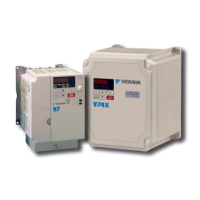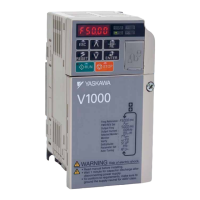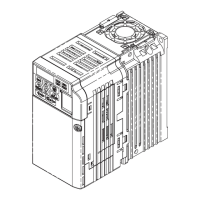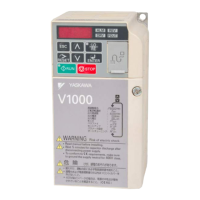Setting 1: 0 to 10 Vdc without Lower Limit
The input level is 0 to 10 Vdc.
Negative input values will be accepted. Refer to the explanation of H3-01, Setting 1. Refer
to Setting 1: 0 to 10 Vdc without Limit on page 195
Setting 2: 4 to 20 mA Current Input
The input level is 4 to 20 mA. Negative input values by negative bias or gain settings will be limited to 0 (like setting 0).
Setting 3: 0 to 20 mA Current Input
The input level is 0 to 20 mA. Negative input values by negative bias or gain settings will be limited to 0 (like setting 0).
n
H3-10: Terminal A2 Function Selection
Determines the function assigned to analog input terminal A2. Refer to Multi-Function Analog Input Terminal
Settings on page 198 for a list of functions and descriptions.
No. Name Setting Range Default
H3-10 Terminal A2 Function Selection 0 to 31 0
n
H3-11/H3-12: Terminal A2 Gain/Bias Setting
Parameter H3-11 sets the level of the selected input value that is equal to 10 Vdc/20 mA input at terminal A2 (Gain).
Parameter H3-12 sets the level of the selected input value that is equal to 0 Vdc/4 mA/0 mA input at terminal A2.
Both
can be used to adjust the analog
input A2 characteristics. The setting works in the same way as parameters H3-03/04
for analog input A1.
No. Name Setting Range Default
H3-11 Terminal A2 Gain Setting -999.9 to 999.9% 100.0%
H3-12 Terminal A2 Bias Setting -999.9 to 999.9% 0.0%
n
H3-13: Analog Input Filter Time Constant
Parameter H3-13 sets the time constant for a first order filter that will be applied to both analog inputs A1 and A2.
No. Name Setting Range Default
H3-13 Analog Input Filter Time Constant 0.00 to 2.00 s 0.03 s
An analog input filter can be used to prevent erratic drive control when a “noisy” analog reference is used. The drive
operation becomes more stable the longer the time
programmed, but it becomes less responsive to rapidly changing analog
signals.
n
Multi-Function Analog Input Terminal Settings
This section describes the various functions that can be assigned to terminals A1 and A2 by setting H3-02 and H3-10.
Note: The scaling of all input functions depends on the gain and bias settings for the analog inputs. Set these to appropriate values when
selecting and adjusting analog input functions.
Table 5.28 Multi-Function Input Terminal Settings
Setting Function Page
0 Frequency Bias 198
1 Frequency Gain 199
2 Auxiliary Frequency Reference 199
4 Output Voltage Bias 199
7 Overtorque/Undertorque Detection Level 199
B PID Feedback 199
C PID Set Point 199
E Motor Temperature (PTC input) 199
F Not used/Through Mode 199
Setting Function Page
10 Forward Torque Limit
199
11 Reverse Torque Limit
12 Regenerative Torque Limit
15 General Torque Limit
16 Differential PID Feedback 199
30 DriveWorksEZ Analog Input 1
200
31 DriveWorksEZ Analog Input 2
41
<1>
Output Voltage Gain 200
<1> Available in drive software versions PRG: 1016 and later.
Setting 0: Frequency Bias
The input value of an analog input set to this function will be added to the analog frequency reference value. Use this
setting also when only one analog input is used to supply the frequency reference.
By default both analog inputs A1 and A2 are set for this function. Using both A1 and A2 at the same time increases the
frequency reference by the total of both inputs.
Example: If the analog frequency reference by analog input A1 is 50% and a bias of 20% is applied by analog input A2,
the resulting frequency reference will be 70% of the maximum output frequency.
5.7 H: Terminal Functions
198
YASKAWA ELECTRIC SIEP C710606 16C YASKAWA AC Drive – V1000 Technical Manual
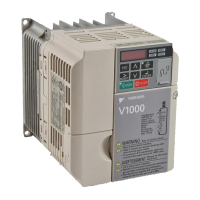
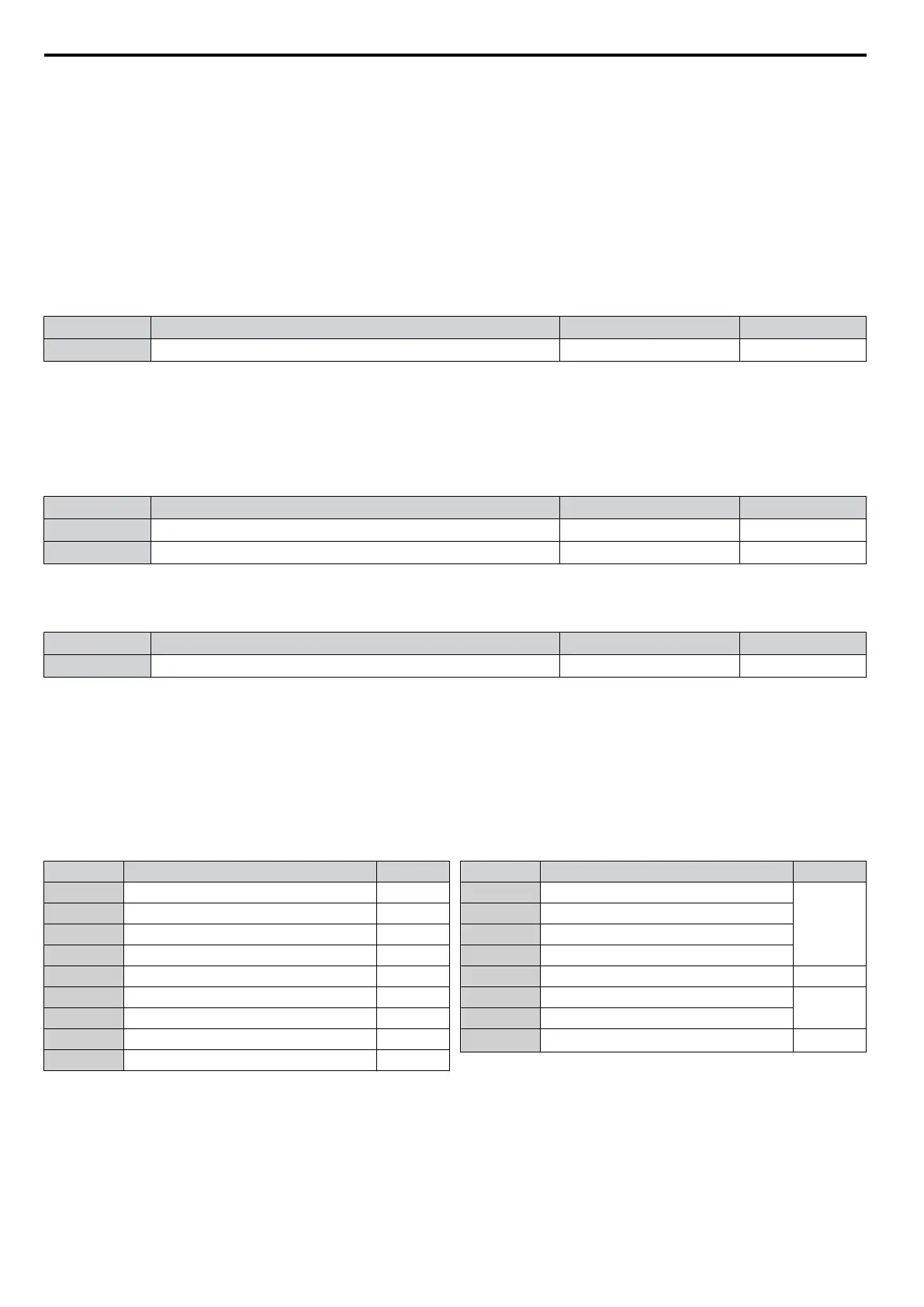